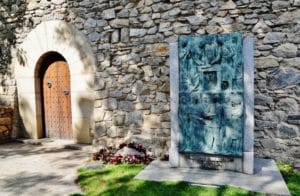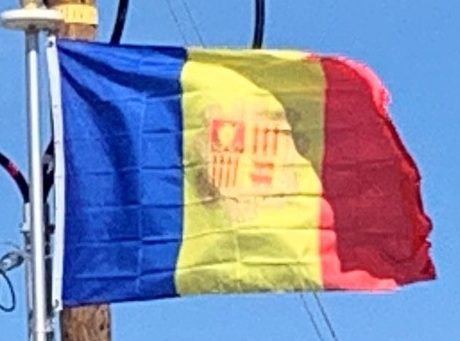In 988, Borrell II, Count of Urgell, gave the Andorran valleys to the Diocese of Urgell in exchange for land in Cerdanya. Since then, the Bishop of Urgell, based in Seu d’Urgell, has been Co-prince of Andorra.
The first document that mentions Andorra as a territory is the Acta de Consagració i Dotació de la Catedral de la Seu d’Urgell (Deed of Consecration and Endowment of the Cathedral of La Seu d’Urgell). The old document dated from 839 depicts the six old parishes of the Andorran valleys and therefore the administrative division of the country.
Medieval Age: The Paréages and the Founding of the Co-Principality:
Before 1095, Andorra did not have any type of military protection and the Bishop of Urgell, who knew that the Count of Urgell wanted to reclaim the Andorran valleys, asked the Lord of Caboet for help and protection. In 1095 the Lord of Caboet and the Bishop of Urgell signed under oath a declaration of their co-sovereignty over Andorra. Arnalda, daughter of Arnau of Caboet, married the Viscount of Castellbò and both became Viscounts of Castellbò and Cerdanya. Years later their daughter, Ermessenda, married Roger Bernat II, the French Count of Foix. They became Roger Bernat II and Ermessenda I, Counts of Foix, Viscounts of Castellbò and Cerdanya, and co-sovereigns of Andorra (shared with the Bishop of Urgell).
In the 13th century, a military dispute arose between the Bishop of Urgell and the Count of Foix as aftermath of the Cathar Crusade. The conflict was resolved in 1278 with the mediation of the king of Aragon, Pere II between the Bishop and the Count, by the signing of the first paréage which provided that Andorra’s sovereignty be shared between the count of Foix (whose title would ultimately transfer to the French head of state) and the Bishop of Urgell, in Catalonia. This gave the principality its territory and political form.

A second paréage was signed in 1288 after a dispute when the Count of Foix ordered the construction of a castle in Roc d’Enclar. The document was ratified by the noble notary Jaume Orig of Puigcerdà and the construction of military structures in the country was prohibited.
In 1364 the political organization of the country named the figure of the syndic (now spokesman and president of the parliament) as representative of the Andorrans to their co-princes making possible the creation of local departments (comuns, quarts and veïnats). After being ratified by the Bishop Francesc Tovia and the Count Jean I, the Consell de la Terra or Consell General de les Valls (General Council of the Valleys) was founded in 1419, the second oldest parliament in Europe. The syndic Andreu d’Alàs and the General Council organized the creation of the Justice Courts (La Cort de Justicia) in 1433 with the Co-Princes and the collection of taxes like foc i lloc (literally fire and site, a national tax active since then).
Although we can find remains of ecclesiastical works dating before the 9th century (Sant Vicenç d’Enclar or Església de Santa Coloma), Andorra developed exquisite Romanesque Art during the 9th through 14th centuries, particularly in the construction of churches, bridges, religious murals and statues of the Virgin and Child (Our Lady of Meritxell being the most important). Nowadays, the Romanesque buildings that form part of Andorra’s cultural heritage stand out in a remarkable way, with an emphasis on Església de Sant Esteve, Sant Joan de Caselles, Església de Sant Miquel d’Engolasters, Sant Martí de la Cortinada and the medieval bridges of Margineda and Escalls among many others.
